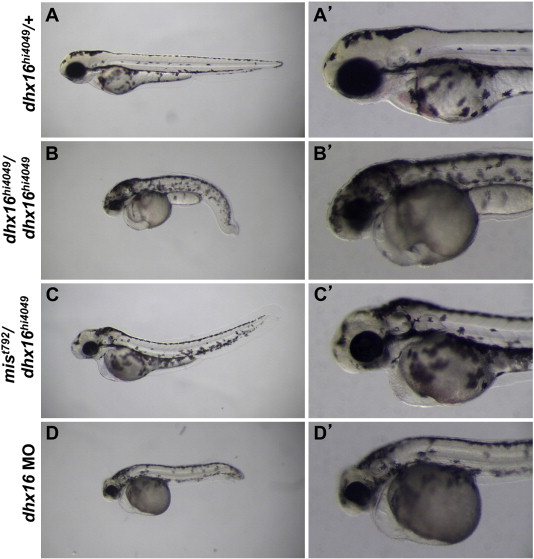Fig. 9
Complementation analysis and functional reduction of mis/dhx16. Live embryos at day 3 p.f. (A,A′) heterozygous for the dhx16hi4049 mutation have a wild-type morphology. (B,B′) Homozygous dhx16hi4049/dhx16hi4049 embryos exhibit necrosis and overall reduction in the head region, as well as a shortened and bent body axis. (C,C′) Necrosis, head reduction and body shape defects are present in mist792/dhxhi4049 transheterozygotes, albeit not to the extent found in dhx16hi4049 homozygotes. (D,D′) Embryos injected with 0.25–1 ng (shown here with 0.25 ng) of morpholino-conjugated oligonucleotide directed against the dhx16 translational start site develop a phenotype similar to that of dhx16hi4049/dhx16hi4049 homozygotes. Embryos injected with similar amounts of a control morpholino appear normal (not shown). In (B–D), the necrosis phenotype could be observed as early as day 2 p.f. as a darkening in the head (not shown), developed at day 3 p.f. into the smaller head (sometimes still associated with darkening) shown in these panels, and the embryos invariably lyse between days 3 and 6 of development. Side views, anterior left, dorsal up. Right column is a higher-magnification view of the left column focusing on the head region.
Reprinted from Developmental Biology, 353(2), Putiri, E., and Pelegri, F., The zebrafish maternal-effect gene mission impossible encodes the DEAH-box helicase Dhx16 and is essential for the expression of downstream endodermal genes, 275-289, Copyright (2011) with permission from Elsevier. Full text @ Dev. Biol.

